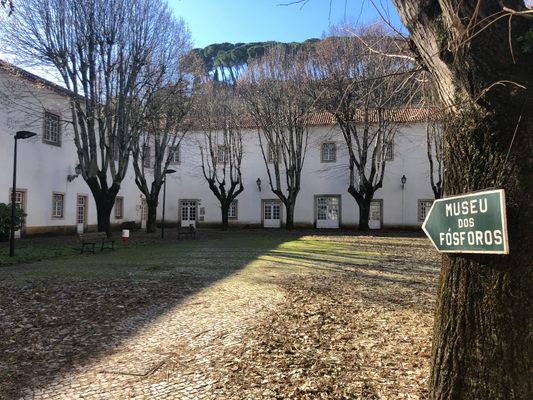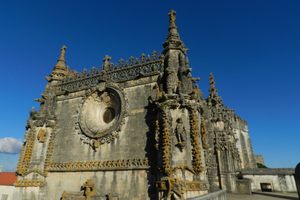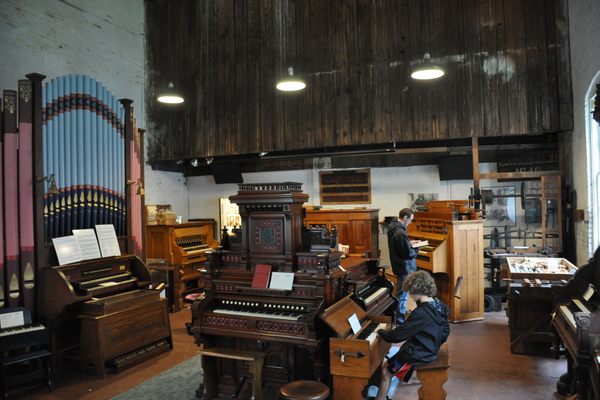About
The Museu dos Fósforos in Portugal is the incredible result of the determination and curiosity of one man. Here, a private collection of 43,000 matchboxes is on display, and another 16,000 matchbox covers can be found assembled in scores of books. It's a huge and fascinating collection, located in a most adorable courtyard in the Convento de São Francisco next to the historic church of the same name.
Aquiles da Mota Lima, the collector who started the borderline obsessive display, was a world-traveling yet humble businessman from Tomar. His fascination with matchbox designs began in 1953. On his way, by ship, to London to attend the coronation of Queen Elizabeth II, he met an American woman who asked him to see if he could pick up a few matchboxes designed for and dedicated to the occasion. She asked if, during his travels, he might collect more matchboxes in other countries and send them to her. He promised yes.
Each time Mota Lima found an interesting matchbox, he kept a similar design for himself. At the time of his return to Portugal he had collected more than 100 quite unique matchboxes. This set him off to collecting matchboxes from ultimately 127 countries containing, “Oh, at least two, three million matchsticks,” says Ana Cristina Rosário, who is one of the ever-so-welcoming and helpful hosts at the museum.
The collection’s oldest matchboxes date from the late 1800s. The design subjects move from social history to kitsch; pin-ups from between the 1890 to the mid-1980s; architecture, old and new; uniforms of many armies; vehicles from horse-drawn to Formula #1; movie stars; soccer players; animals, including racehorses and snakes; royalty portraits; erotica; windmills; classic ballet dancers; paintings by world-famous artists; all kinds of weaponry; national flags; war ships; and even typography, from poetry to recipes.
After Aquiles died, his daughter Maria Helena da Mota Lima supervised the collection. As of 2017 she, while at a fragile age, can still be found on the premises at least once a week. She is very attached to the collection and the museum, where the matchbox with the young crowned Elizabeth II is proudly on prominent display.
The matchboxes on show are arranged by country of origin and sometimes by subject. Row after row in seven large rooms, the displays overwhelm the visitor. One visit is not enough; repeated visits each time open up new discoveries. There is so much… matchboxes from the early Communist days in the USSR, of Olympic Games, of book covers and film posters, great authors, sports stars long gone from anyone’s memory, despotic rulers and democratically chosen politicians, warlords, and peaceniks.
Some designs are rather primitive, others are very well done with regard for typography or color control. Some are rough copies of larger images, others are precisely drawn originals. And some are historically important while others are just “for fun” or aimed to be an end product for little children. Even the quality of print differs from one brand to the other, or from one country or period to the other.
If your curiosity is sufficiently piqued, you may want to further explore the collection of matchbox art at the Museum of Fine Art in Boston, Massachusetts. There you will discover a 119-page scrapbook filled with 917 matchbook labels. This extraordinary, beautiful collection was bought in Tokyo, Japan, in a flea market in 2012. There is also a Cajas de Fósforos in the Museo de la Ciudad in Mexico City, though its collection is not as impressive by far as the one in Tomar.
In Jönköping, Sweden (southwest of Stockholm) the leading matchmaking brothers Lundstrom also founded a Museum of Matches, but here it is not just the box designs that are focused on but the whole matchstick production process. For other large matchbox design collections, you will have to visit private collectors like this one in Tomar. There are quite a few such determined obsessive collectors across the world, with 300 or 3,000, or 10,000 covers in their cherished collections. Their heritage, like Mota Lima’s, is a wonderful one, no doubt also full of beauty and surprises.
Related Tags
Know Before You Go
The collection was received as a donation by the municipality of Tomar in 1980 and granted its own museum at the Avenida General Bernardo Faria, 100 steps straight ahead when coming from Tomar’s railway station, on the left.
Portugal: A Culinary Adventure from Porto to Lisbon
Explore Portugal through food, from the cities to the seaside.
Book NowPublished
September 25, 2017
































































